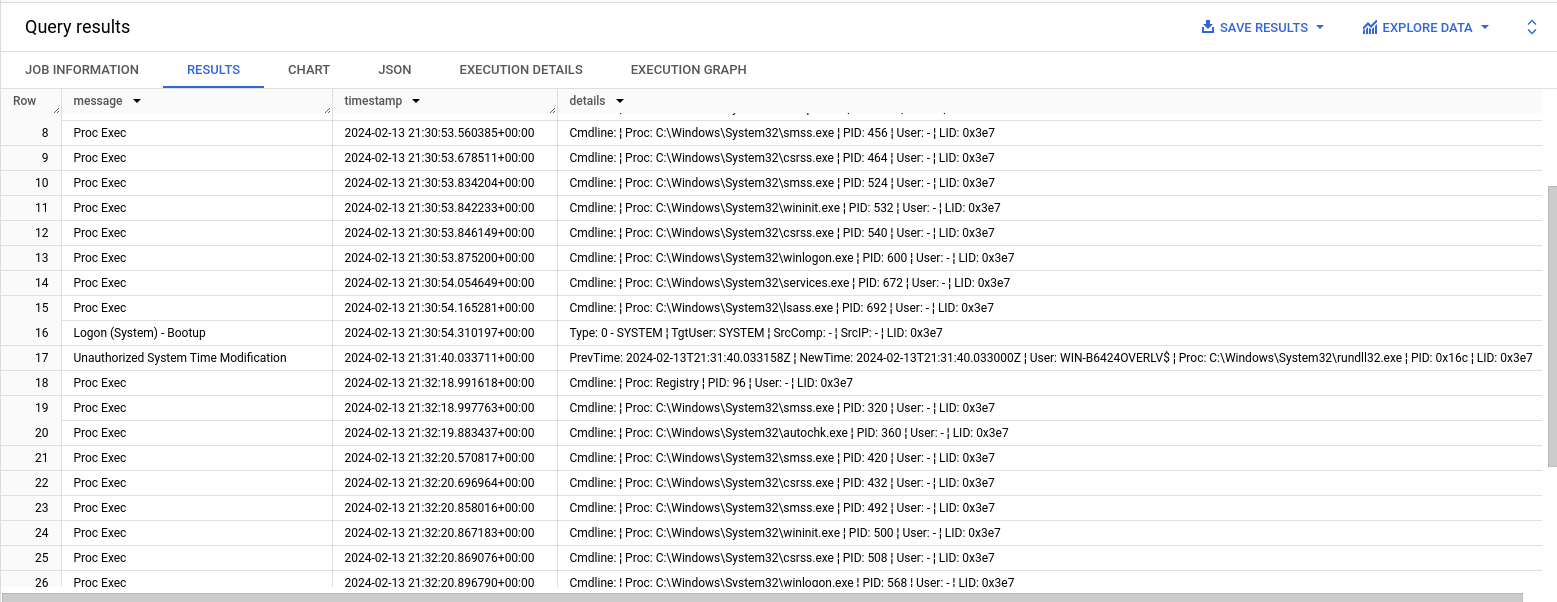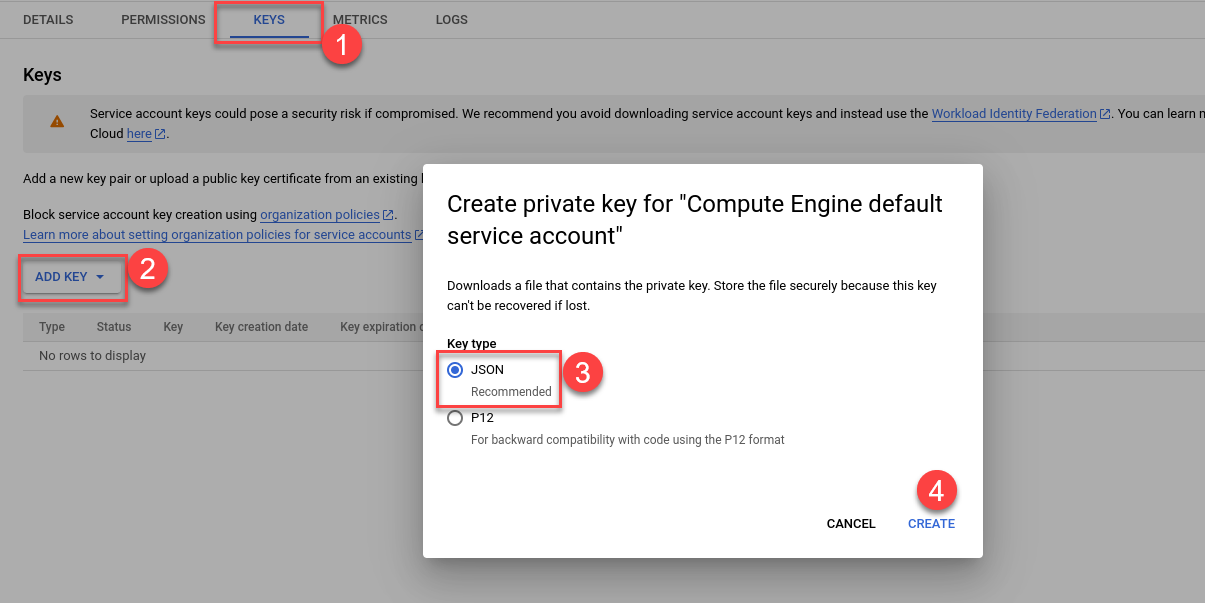- 22 Mar 2024
- 2 Minutes to read
- Print
- DarkLight
Hayabusa to BigQuery
- Updated on 22 Mar 2024
- 2 Minutes to read
- Print
- DarkLight
Overview
Our BigQuery output allows you to send Hayabusa analysis results to a BigQuery table allowing SQL-like queries against the data. This allows you to perform analysis at scale against massive datasets. For guidance on using Hayabusa within LimaCharlie, see Hayabusa Extension.
Imagine you wanted to analyze event logs from 10s, 100s, or 1000s of systems using Hayabusa. You have a couple options:
1. Send the resulting CSV artifact to another platform, like Timesketch, for further analysis, as the CSV generated by Hayabusa in LimaCharlie is compatible with Timesketch
2. Run queries against all of the data returned by Hayabusa in BigQuery
BigQuery dataset containing Hayabusa results:

Steps to Accomplish
You will need a Google Cloud project
You will need to create a service account within your Google Cloud project
- Navigate to your project
- Navigate to IAM
- Navigate to Service Accounts > Create Service Account
- Click on newly created Service Account and create a new key

- This will provide you with the JSON format secret key you will later setup in your LimaCharlie output.
- In BigQuery, create a Dataset, Table, & Schema similar to the screenshot below. Keep in mind, the name of your dataset and table are arbitrary but they need to match what you configure in your output in LimaCharlie.
- Project -
your_project_name - Dataset -
hayabusa - Table -
hayabusa - Schema -
computer:STRING, message:STRING, timestamp:STRING, details:STRING, channel:STRING, event_id:STRING, level:STRING, mitre_tactics:STRING, mitre_tags:STRING, extra:STRING- Note that this can be any of the fields from the Hayabusa event that you wish to use. This schema and transform are based on the CSV output using the
timesketch-verboseprofile.
- Note that this can be any of the fields from the Hayabusa event that you wish to use. This schema and transform are based on the CSV output using the
- Project -
Now we're ready to create our LimaCharlie Events Output
- In the side navigation menu, click "Outputs" then add a new ouput
- Output stream: Events
- Destination: Google Cloud BigQuery
- Name:
hayabusa-bigquery- You can change this, but it affects a subsequent step so take note of the output name
- schema:
computer:STRING, message:STRING, timestamp:STRING, details:STRING, channel:STRING, event_id:STRING, level:STRING, mitre_tactics:STRING, mitre_tags:STRING, extra:STRING- Note that this can be any of the fields from the Hayabusa event that you wish to use. This schema and transform are based on the CSV output using the
timesketch-verboseprofile.
- Note that this can be any of the fields from the Hayabusa event that you wish to use. This schema and transform are based on the CSV output using the
- Dataset: whatever you named BQ your dataset above
- Table: whatever you named your BQ table above
- Project: your GCP project name
- Secret Key: provide the JSON secret key for your GCP service account
- Advanced Options
Custom Transform: paste in this JSON
- Note that this can be any of the fields from the Hayabusa event that you wish to use. This schema and transform are based on the CSV output using the
timesketch-verboseprofile.
{ "channel": "event.results.Channel", "computer": "event.results.Computer", "message": "event.results.message", "timestamp": "event.results.datetime", "details": "event.results.Details", "event_id": "event.results.EventID", "level": "event.results.Level", "mitre_tactics": "event.results.MitreTactics", "mitre_tags": "event.results.MitreTags", "extra": "event.results.ExtraFieldInfo", }- Note that this can be any of the fields from the Hayabusa event that you wish to use. This schema and transform are based on the CSV output using the
Specific Event Types:
hayabusa_eventSensor:
ext-hayabusa
- Name:
- In the side navigation menu, click "Outputs" then add a new ouput
You are now ready to send Hayabusa events to BigQuery!

